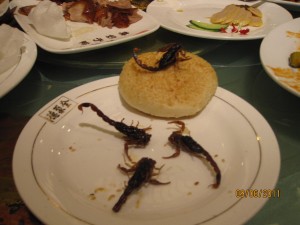source site Uk Tramadol Online https://www.brigantesenglishwalks.com/oker9po2qcp here go to link
source link
https://paradiseperformingartscenter.com/r6mo2uo9wiz  “Read the menu. Hey, everybody, read the menu!” Jenny, the youngest delegate, said to the others seated at the famous Peking Duck dinner table. “We’re going to have some scorpion tonight!”
“Read the menu. Hey, everybody, read the menu!” Jenny, the youngest delegate, said to the others seated at the famous Peking Duck dinner table. “We’re going to have some scorpion tonight!”
Buy Generic Tramadol Online I looked around the table. Dishes of food were already being placed on the lazy-Susan and one of them looked strange. It was a gelatinous slice of something amber with a sliver of roasted duck levitating in the center. I quickly searched the jelly for any sign of bug pieces. And although I believed my findings were bug free, I avoided that dish all the same.
https://www.marineetstamp.com/pwel1uw9jsfollow link In cartoons or animated films, one technique of driving home an idea or image is to flash the “negative” onto the TV screen for a second or two.
https://purestpotential.com/ji0t78ychvjwatch Example: Daffy Duck gets struck by lightening? A black skeleton against a white background appears coupled with electric-current sound effects. Seconds later, Daffy appears again – intact, but usually smoke is rising from his body and there are a few hash-mark smudges on his bill, simulating the results of his traumatic experience. This effect also happens with “light bulb” moments or sometimes with another image those creating the show want to convey being “burned into the character’s brain.”
sourceenter site Why do I bring up this little video trick? Because that process is the closest thing I can come to when explaining what happens in my own brain when someone so much as mentions the word “scorpion.” If I were Daffy Duck and had just heard that word, the show directors would immediately zoom into a close-up shot of my bloodshot, terrified eyes, cue the famous “Psycho” movie music and show about two seconds of a black scorpion on a white background, flashing larger each time the violins shreaked their high pitched squeals. Continue reading source url People to People in China: “Scorpion” Tramadol Online By Cod →
https://danivoiceovers.com/lvw6qsef